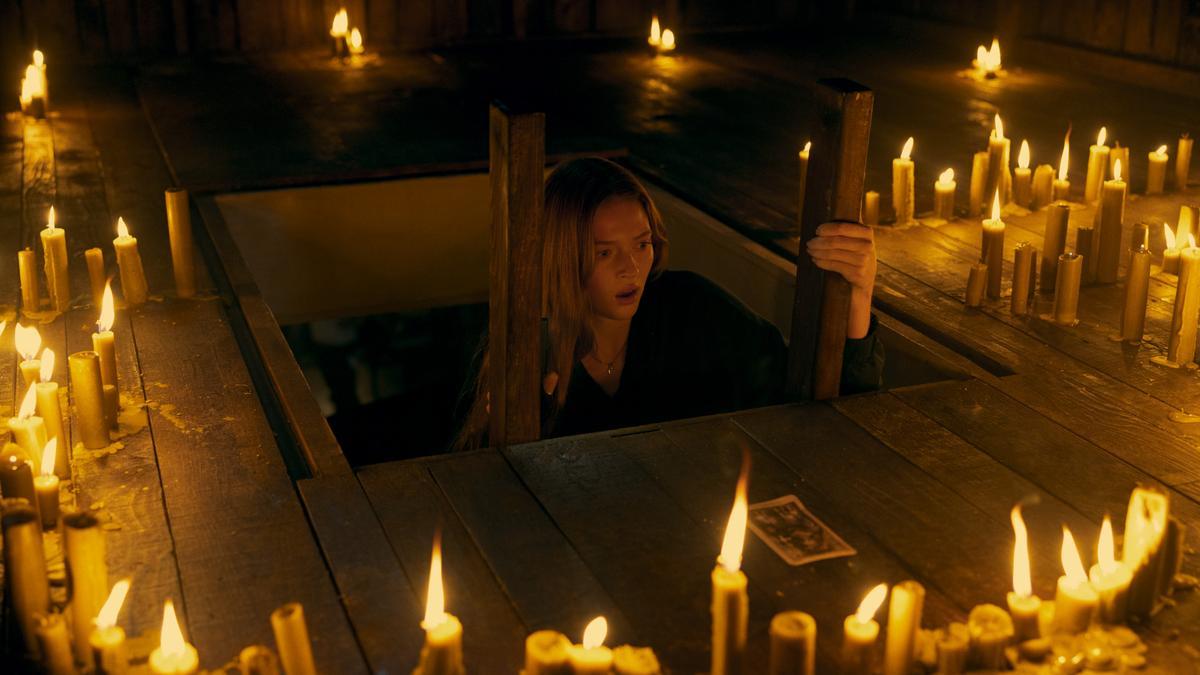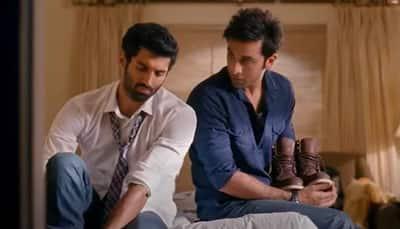
Imagine the trepidation that would grip you if a malevolent spirit was relentlessly pursuing you, intent on claiming your very existence. Deciding on an effective course of action under such duress is no simple task, yet I am quite certain there would be a consensus on what not to do. Envision, if you will, that an unearthly specter is at your heels; you certainly wouldn’t go trudging up into an attic after nightfall, you wouldn’t dart into the ominous recesses of a basement, you wouldn’t conceal yourself within a large container that seals from the outside, and you assuredly wouldn’t venture away from the safety of your companions. Regrettably, such contrived blunders are exactly what the protagonists in “Tarot” commit, with such a heavy reliance on worn-out tropes there is scarcely room for any true scares.
The movie begins, quite predictably, with a ‘mansion in the woods’ scenario. A group of friends, evidently bored, settle into said mansion for the weekend. In their dullness, they open a locked room and find an enigmatic tarot deck. One of them proceeds to recite horoscopes for the whole group from these cards. The audience, now steeped in expectation of predictable outcomes, is mercifully spared prolonged anticipation when the characters vacate the mansion the following day. However, as with the inexorable spirit of the tale, the clichés surge forth once again as the young New Yorkers begin to fall victim to fates foreshadowed by the tarot.
Adain Bradley Grant and Avantika Vandanapu Paige feature in “Tarot” as the ill-fated youngsters. While most horror flicks revel in the delivering of suspenseful moments amidst the creaking of well-worn hinges and the suddenness of jump scares, “Tarot” embraces these aged conventions with neither shame nor novelty. Those with fond memories of old-school horror may find a certain nostalgic charm in these tropes, but for many, “Tarot” will only serve to highlight why such formulaic scare tactics have been left to gather dust.
In the midst of this predictable affair, one might find solace in the depictions of the characters’ demises – some creatively executed. Although it may sound macabre, the film almost makes you wish for a larger cast, if only to diversify the manner of their ends. This morbid wish is exacerbated by the lackluster depth of the characters, making it difficult to invest emotionally in their fates.
Not even the often intriguing backstory of how an innocent was transformed into a vengeful ghost escapes the undertow of mediocrity. Atmospheric and narrative opportunities are squandered, leaving one to speculate little about the villain’s origins. The film, which prematurely reveals its hand in the opening scenes, even goes as far as to dictate the correct pronunciation of ‘Tarot’—a detail as superfluous as it is telling about the film’s approach to storytelling.
In essence, what “Tarot” puts forth is a feature akin to a haunted house: structured from old blueprints and adorned with relics that have long ceased to frighten. Unless one harbors a fondness for clichéd storytelling and sporadically inventive character demises, this movie is likely to be found wanting in terms of entertainment.
As “Tarot” takes its course through theaters, it finds its place amid a landscape of English and world cinema as a reminder that not all attempts to revitalize the thriller genre are successful. With a reliance on the predictable, the movie is emblematic of the struggles faced by contemporary horror to innovate and maintain a grip on an audience ever more inured to the thrills of yesteryear.










